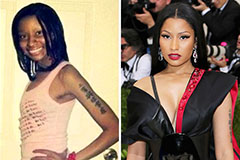Looking Into the Diverse Globe of Artistic Expression: From Surrealism to Abstract Realism
In the realm of imaginative expression, from the dreamlike landscapes of surrealism to the elaborate play of light and kind in abstract realistic look, musicians have actually continually pushed the boundaries of creativity and creativity. As we discover the diverse globe of art, we are offered with a tapestry of designs, methods, and viewpoints that test our understanding and prompt consideration.
Surrealism: Releasing the Subconscious
Surrealism, a progressive imaginative movement of the 20th century, looked into the depths of the subconscious, unveiling a world of dream-like images and unique associations. Spearheaded by artists like Salvador Dali, René Magritte, and Joan Miró, Surrealism sought to challenge the conventional means of seeing and comprehending art. Through methods such as automatism and dream evaluation, Surrealist artists aimed to use the unconscious mind to reveal concealed realities and wishes.
Among the crucial elements of Surrealism was the emphasis on the illogical and the remarkable. By integrating unexpected elements in their works, Surrealist artists intended to develop a sense of disorientation and surprise in the audience. This disturbance of logic and reason was suggested to prompt a much deeper exploration of the subconscious and the enigmas of the human subconscious.
Abstract Realism: Redefining Perception
Challenging conventional artistic boundaries, Abstract Realistic look redefines assumption via the blend of recognizable aspects with abstract forms. This ingenious strategy to art incorporates the representational precision of realistic look with the creative flexibility of abstraction, using visitors a distinct visual experience that motivates them to examine their assumption of truth.
In Abstract Realistic look, musicians strive to record the significance of their topics while additionally instilling their deal with a feeling of deepness and intricacy with abstract elements. By blending the knowledgeable about the unknown, these musicians invite target markets to involve with their pieces on several levels, encouraging them to discover the subtleties of color, texture, and kind.

Cubism: Fragmentising Fact
Making use of fragmented viewpoints and geometric forms, Cubism changed the creative depiction of fact in the early 20th century. Created by Pablo Picasso and Georges Braque, Cubism sought to test traditional notions of viewpoint and depiction. By damaging down items and numbers into geometric shapes and providing them from multiple perspectives at the same time, Cubist artists aimed to capture the significance of the subject as opposed to its actual appearance. This technique not only deconstructed fact however also stressed the flatness of the canvas, leading the way for future abstract art motions.

Cubism can be classified into two main stages: Analytical Cubism, defined by single color design and intricate, fragmented kinds; and Artificial Cubism, which included collage elements and brighter shades into the make-ups. Through these distinctive stages, Cubism affected not only paint but also architecture, sculpture, and layout. trump art. Its influence resounded throughout the art globe, motivating musicians to explore brand-new ways of standing for the world and translating around them
Expressionism: Feelings on Canvas
Exploring the midsts of human emotions through expressive and vivid brushstrokes, Expressionism arised as an extensive artistic movement in the very early 20th century. Unlike previous art movements that concentrated on portraying the outside globe, Expressionism looked into the interior realm of the musician's psyche, aiming to evoke raw feelings and prompt natural reactions from customers.
Expressionist musicians, such as Edvard Munch, Egon Schiele, and Emil Nolde, turned down traditional ideas of elegance and realism for misshaping kind and color to share subjective feelings. The usage of exaggerated brushwork, strong shades, and distorted figures assisted create a feeling of anxiousness, alienation, or passion in their jobs.
Among one of the most famous instances of Expressionism is Munch's "The Scream," which catches the extreme anxiousness and despair of contemporary life with its swirling, distorted number against a blood-red skies. With their mentally billed jobs, Expressionist musicians looked for to test traditional creative standards Read Full Report and supply a home window right into the rough midsts of the human heart.
Contemporary Art: Progressing Perspectives

One of the defining features of contemporary art is its consistent evolution and Extra resources capability to adapt to transforming cultural landscapes. Artists are progressively integrating modern technology into their method, obscuring the lines in between the electronic and physical realms. This blend of tools permits ingenious means of storytelling and engaging with target markets in a more interactive manner.
Moreover, contemporary art typically acts as a platform for social discourse, resolving pressing concerns such as identity, politics, and the atmosphere. Artists are using their work to spark important discussions and provoke thought, clarifying the complexities of the globe we live in. As perspectives proceed to progress, modern art continues to be a dynamic and significant pressure in forming our social landscape.
Verdict
To conclude, the world of imaginative expression includes a wide variety of movements and designs, each with its very own one-of-a-kind method to communicating significance and emotion. From surrealism's expedition of the subconscious to abstract realism's redefining of assumption, and from cubism's fragmentation of fact to expressionism's portrayal of emotions, art proceeds to evolve and test viewpoints - trump art. Contemporary art mirrors the ever-changing world we live in, offering brand-new ways to translate and comprehend the complexities of our reality
As we discover the complex world of art, we are presented with a tapestry of styles, methods, and approaches that test our understanding and prompt reflection. Its influence resounded across the art world, motivating artists to check out brand-new means of standing for the world and translating around them.

 Alexa Vega Then & Now!
Alexa Vega Then & Now! Raquel Welch Then & Now!
Raquel Welch Then & Now! Dolly Parton Then & Now!
Dolly Parton Then & Now! Nicki Minaj Then & Now!
Nicki Minaj Then & Now! Sarah Michelle Gellar Then & Now!
Sarah Michelle Gellar Then & Now!